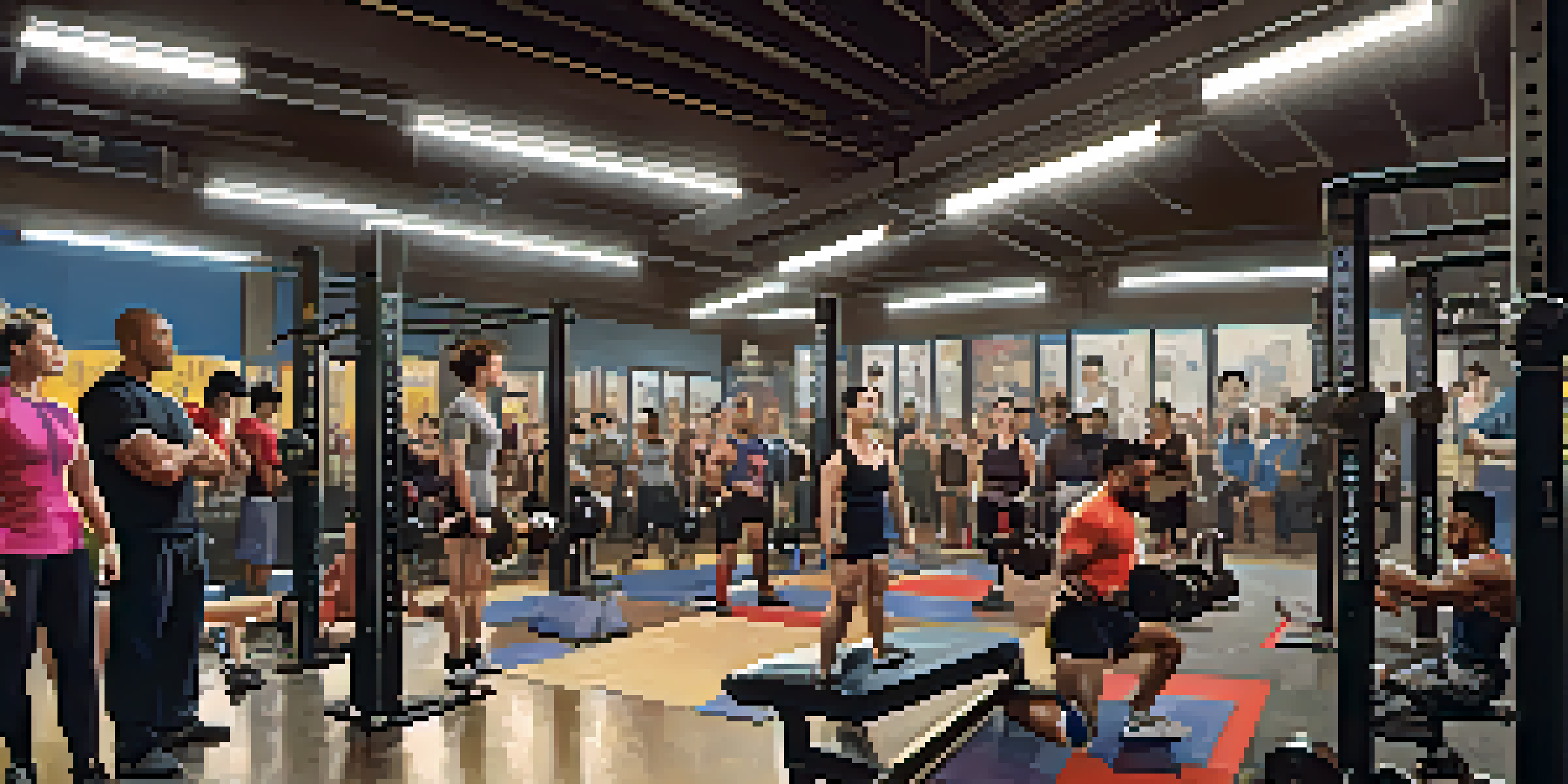Powerlifting Is Dangerous and Causes Injuries: The Real Story

The Real Risks of Powerlifting: An Overview
Powerlifting, like any sport, comes with its own set of risks. Many new lifters may hear horror stories about injuries, which can create a fearful perception of the sport. However, it's essential to distinguish between reality and exaggeration. Understanding these risks can empower athletes to make informed decisions about their training.
Strength does not come from physical capacity. It comes from an indomitable will.
Common injuries in powerlifting often stem from improper technique or inadequate preparation. Just like in any physical activity, when movements are executed incorrectly, the body can be put under unnecessary strain. This can lead to issues such as strains, sprains, or even more severe injuries if not addressed promptly.
Importantly, the narrative surrounding powerlifting injuries can often be skewed. While injuries can and do happen, they are not an inevitable outcome for every lifter. With proper training, education, and a focus on safety, many athletes can enjoy the benefits of powerlifting without falling victim to these concerns.
Understanding Common Injuries in Powerlifting
Injuries in powerlifting can range from minor strains to more serious issues like herniated discs. The most common injuries typically involve the lower back, shoulders, and knees. These areas are heavily involved in the lifting movements, making them susceptible to overuse or improper loading.

For instance, a lifter might experience a shoulder injury due to poor bench press form or a knee injury from squats performed with incorrect alignment. It's crucial to listen to your body and recognize when something feels off. Ignoring these warning signs can lead to more significant problems down the line.
Injury Risks in Powerlifting
Powerlifting carries risks of injury, but with proper technique and preparation, athletes can minimize these concerns.
Another common injury is the muscle strain, which can occur in any muscle group used during lifting. It’s vital to warm up adequately, strengthen supporting muscles, and incorporate flexibility work to mitigate these risks. By prioritizing these aspects, lifters can significantly reduce their chances of injury.
The Importance of Proper Technique in Powerlifting
Proper technique is the cornerstone of safe powerlifting practices. When lifters understand the mechanics of each lift, they can execute movements more safely and effectively. This knowledge not only enhances performance but also minimizes the risk of injury.
The only way to prove you are a good sport is to lose.
A great way to ensure proper technique is to work with a coach or experienced lifter. They can provide valuable feedback and help refine your form. This personalized guidance can be incredibly beneficial, especially for beginners who may not yet be familiar with the nuances of each lift.
Additionally, utilizing video analysis can be a useful tool for self-assessment. Recording your lifts allows you to review your form and make necessary adjustments. This practice can lead to greater awareness and ultimately a safer lifting experience.
The Role of Warm-ups and Recovery in Injury Prevention
Warming up is an often-overlooked aspect of powerlifting that can significantly impact injury prevention. A proper warm-up increases blood flow to the muscles, improves flexibility, and prepares the body for the stress of lifting heavy weights. Skipping this step can leave the body unprepared and more prone to injury.
Equally important is the recovery phase after lifting sessions. Giving your body adequate time to heal and repair is crucial in preventing overuse injuries. Incorporating rest days and active recovery strategies, such as light stretching or low-impact activities, helps promote muscle recovery.
Importance of Technique and Warm-ups
Proper technique and adequate warm-ups are crucial for preventing injuries and ensuring a safe lifting experience.
Incorporating mobility work into your routine can also enhance recovery and reduce injury risk. By focusing on joint health and flexibility, lifters can support their bodies during intense training periods, making it easier to maintain powerlifting as a long-term practice.
The Psychological Aspect of Powerlifting and Injuries
The psychological impact of injuries in powerlifting can be profound. Many lifters face anxiety about returning to the gym after an injury, fearing further harm. This mental barrier can hinder progress and even lead to a reluctance to engage with the sport they love.
It's essential to approach powerlifting with a positive mindset, acknowledging that injuries can be a part of the journey. Focusing on gradual progress and celebrating small victories can help lift the mental weight that often accompanies physical setbacks. This shift in perspective can foster resilience and a healthier relationship with training.
Moreover, building a supportive community can make a significant difference. Sharing experiences with fellow lifters can provide encouragement and insight, helping individuals navigate the ups and downs of their powerlifting journey. A strong support network can be invaluable in maintaining motivation and focus.
Injury Management: When to Seek Professional Help
Knowing when to seek professional help is crucial in managing injuries effectively. If pain persists beyond a few days or worsens with activity, it’s wise to consult a healthcare provider. Early intervention can prevent more serious complications from developing.
Physical therapists can offer specialized rehabilitation programs tailored to powerlifters. These programs often include strength training specific to the injured area and can help restore function while addressing underlying issues. This focused approach can pave the way for a successful return to lifting.
Mental Health and Support Systems
The psychological impact of injuries in powerlifting emphasizes the need for a positive mindset and strong community support.
Listening to your body is essential. If something doesn’t feel right, it’s better to err on the side of caution. Taking the time to address concerns early can make all the difference in your long-term lifting journey.
Building a Safe Powerlifting Environment
Creating a safe environment for powerlifting is essential for injury prevention. This includes having appropriate equipment, such as well-maintained bars, plates, and lifting platforms. A proper gym setup can make a significant difference in ensuring that lifters can train safely.
Additionally, fostering a culture of safety among gym members is vital. Encouraging open communication about techniques, safety protocols, and injury experiences can create an environment where everyone looks out for one another. This sense of community can enhance the overall lifting experience.

Lastly, educating yourself and fellow lifters about the importance of safety can go a long way. Hosting workshops or discussions about proper lifting techniques, injury prevention, and recovery strategies can equip lifters with the knowledge they need to stay safe and enjoy powerlifting for years to come.